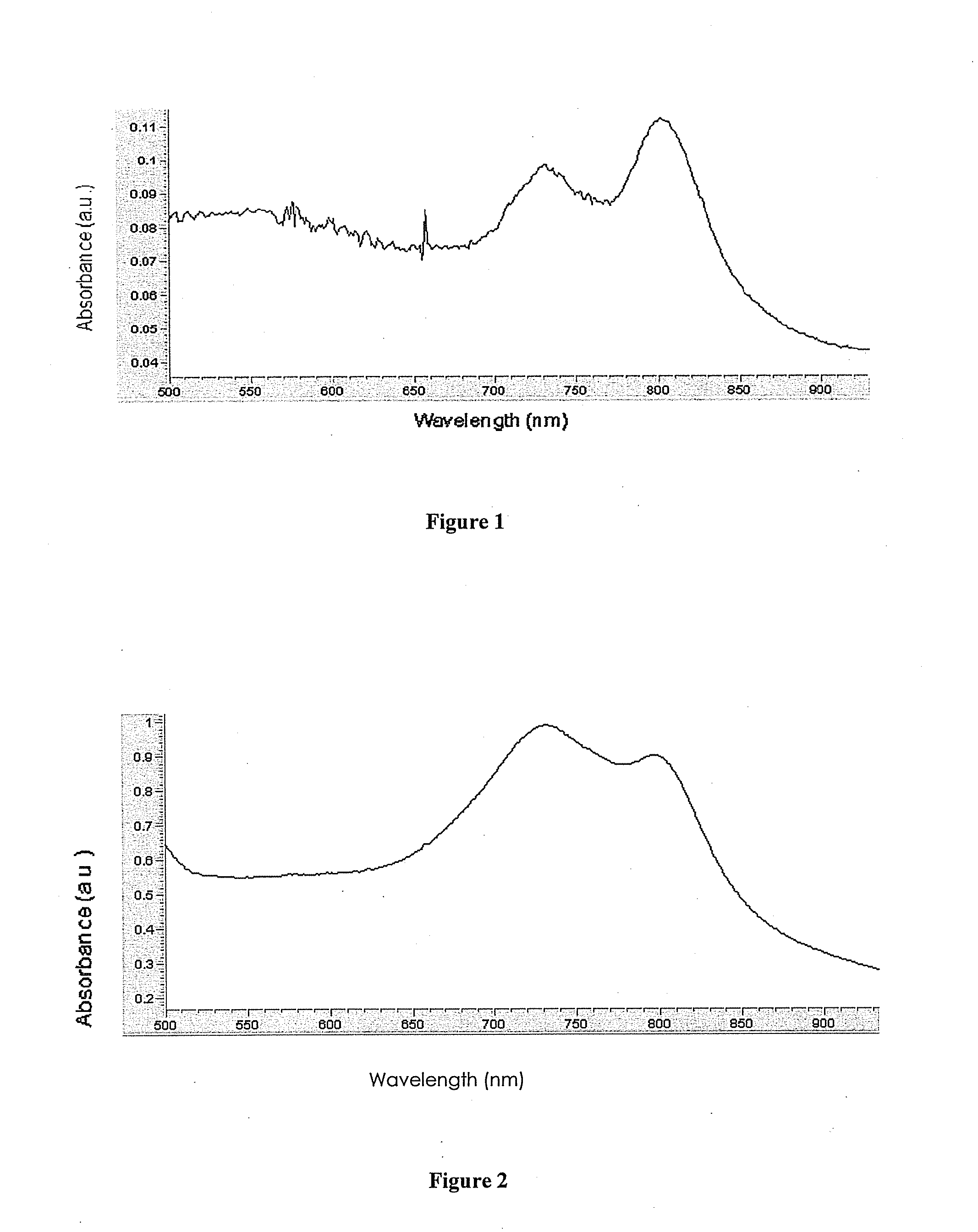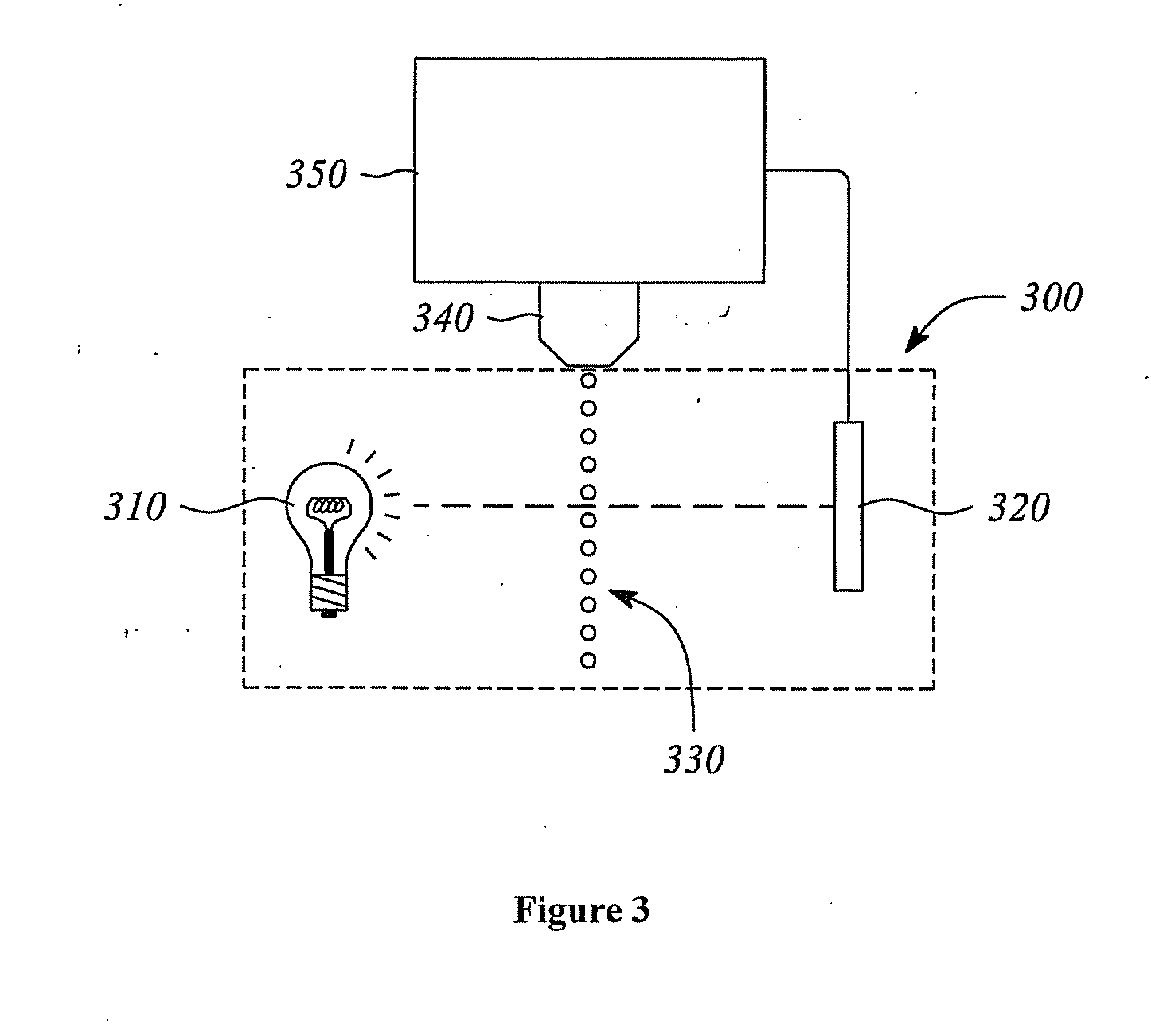Naphthalocyanine dye and ink containing the same
a technology of naphthalocyanine and dye, which is applied in the field of naphthalocyanine dye and ink containing the same, can solve the problems of destroying the conjugation of phthalocyanine and naphthalocyanine compounds with near ir absorption, affecting the stability of commercial water soluble cyanine, and affecting the absorption of naphthalocyanine compounds, and affecting the absorption of naphthalocyanin
- Summary
- Abstract
- Description
- Claims
- Application Information
AI Technical Summary
Benefits of technology
Problems solved by technology
Method used
Image
Examples
example 1
[0054]Table A below illustrates some naphthalocyanine dyes according to embodiments of the present invention:
TABLE A 1) 2) 3) 4) 5) 6) 7) 8) 9)10)11)12)13)14)15)16)17)18)19)20)21)22)23)
example 2
[0055]A naphthalocyanine dye including, in particular, an indium naphthalocyanine sulfonate sodium salt is formulated. The naphthalocyanine compound has the chemical structure (VII), wherein R1 and X are SO3Na, wherein R2 is CH2CH2CH2CH3 and wherein M is In.
[0056]To make the naphthalocyanine compound of the example 2 above, 2.58 gram of 1,4-Dibutoxy-2,3-naphthalenedicarbonitrile; 1.42 grams of 2,3-naphthalenedicarbonitrile and 1.17 grams of indium acetate are mixed with 3.2 g urea along with a catalytic quantity of ammonium molybdate (0.12 g). This mixture is then heated to 210° C. for 2.5 hours. This mixture is then cooled and washed with water followed by a wash with isopropanol to obtain the product with naphthalocyanine ring having mixed substituents. Those mixed groups are the naphthalene having hydrogen and butoxy units. This product (5.2 g) is sulfonated with fuming sulfuric acid containing 20% of sulfur trioxide (21 ml) at ambient temperature for two days. During this step, ...
example 3
[0057]A naphthalocyanine dye including, in particular, an indium tetraphenyl naphthalocyanine sulfonate sodium salt is formulated. The naphthalocyanine compound has the chemical structure (X), wherein R1 and X are SO3Na, wherein R2 is CH2CH2CH2CH3 and wherein M is In.
[0058]To make the fused naphthalocyanine compound of example 3,1,4-Dibutoxy-2,3-naphthalenedicarbonitrile (1.77 g), 2,3-naphthalenedicarbonitrile (1.45 g), 1,2,4,5-tetracyanobenzene (0.44 g), indium acetate (1.45 g) are mixed with urea (4.0 g) along with a catalytic quantity of ammonium molybdate (0.1 g). This mixture is heated to 210° C. for 2 hours. This mixture is then cooled and washed with water followed by isopropanol to obtain the product with fused naphthalocyanine ring having mixed substituents. Those mixed groups are the naphthalene having hydrogen and butoxy units. This product (5.7 g) is sulfonated with fuming sulfuric acid containing 20% sulfur trioxide (23 ml) at ambient temperature for 24 hours. During th...
PUM
| Property | Measurement | Unit |
|---|---|---|
| absorption at wavelengths | aaaaa | aaaaa |
| wavelength | aaaaa | aaaaa |
| wavelength | aaaaa | aaaaa |
Abstract
Description
Claims
Application Information
 Login to View More
Login to View More - R&D
- Intellectual Property
- Life Sciences
- Materials
- Tech Scout
- Unparalleled Data Quality
- Higher Quality Content
- 60% Fewer Hallucinations
Browse by: Latest US Patents, China's latest patents, Technical Efficacy Thesaurus, Application Domain, Technology Topic, Popular Technical Reports.
© 2025 PatSnap. All rights reserved.Legal|Privacy policy|Modern Slavery Act Transparency Statement|Sitemap|About US| Contact US: help@patsnap.com



